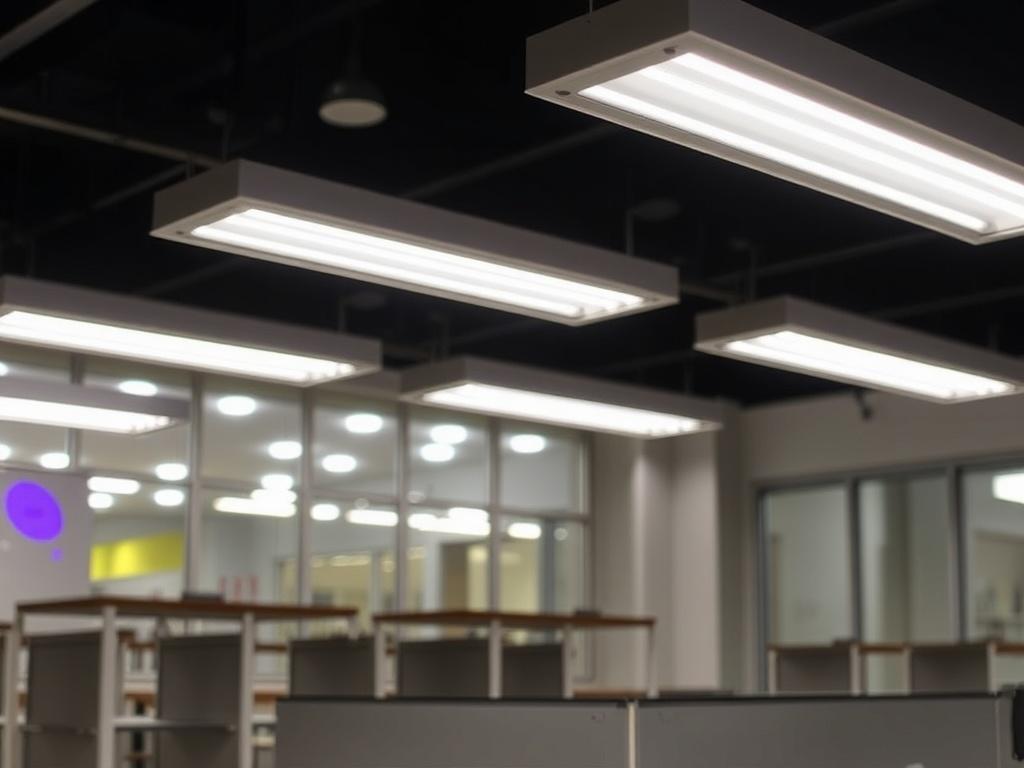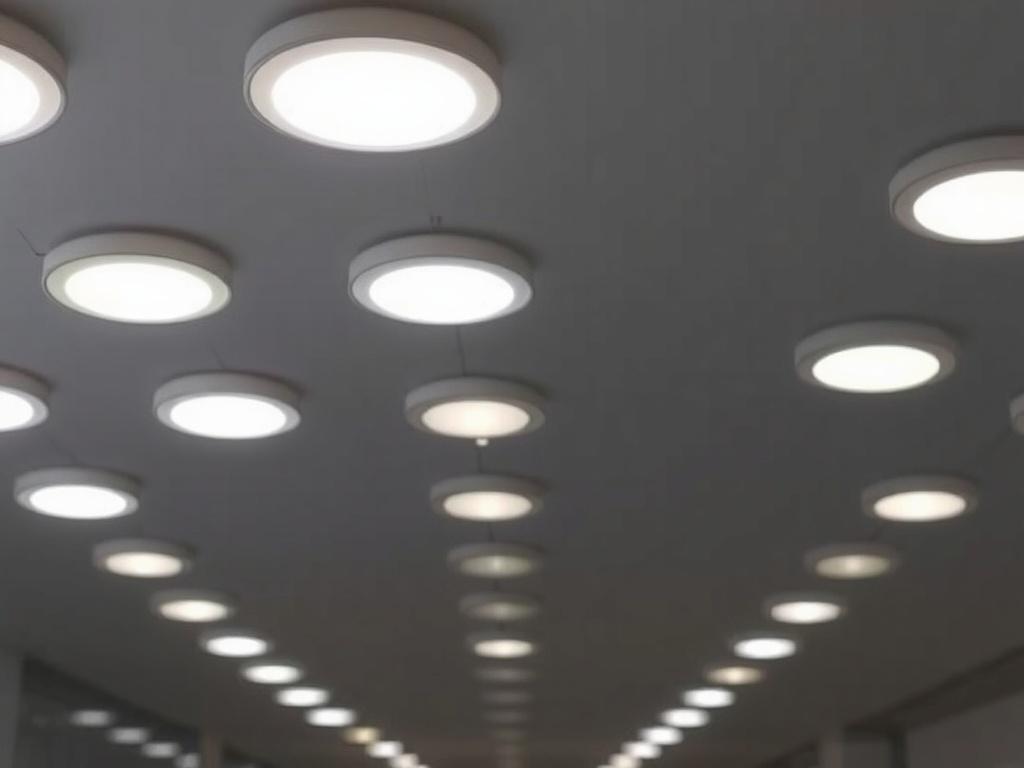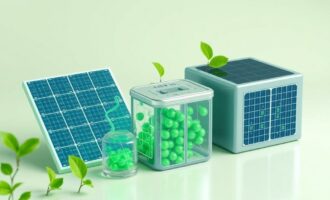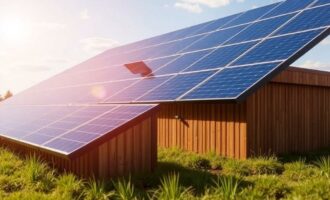- Introduction to LED Lighting and Efficiency
- Understanding LED Lighting Efficiency
- Key Factors Affecting LED Lighting Efficiency
- Current State of LED Lighting Efficiency
- Typical Efficiency Ranges of Different Lighting Technologies
- Colors and Color Temperatures: Impact on Efficiency
- The Journey Toward Maximum Efficiency
- Breaking Physical Barriers
- Innovative Materials and Technologies
- Applications Driving LED Efficiency Demands
- Residential and Commercial Lighting
- Street Lighting and Urban Infrastructure
- Automotive and Specialty Lighting
- Energy and Environmental Impact
- LED Lighting vs. Traditional Options: Environmental Benefits
- Challenges and Limits to LED Lighting Efficiency
- Future Perspectives: How Far Can LED Efficiency Go?
- Smart Lighting and Energy Management
- Integration with Renewable Energy
- Summary Table: LED Efficiency Progress and Projections
- Conclusion
Introduction to LED Lighting and Efficiency
LED lighting has transformed the way we illuminate our homes, offices, and cities. Its rise in popularity over traditional incandescent and fluorescent bulbs stems largely from its remarkable energy efficiency and longevity. But how far can LED lighting efficiency really go? This question intrigues industry experts, engineers, and environmentally conscious consumers alike. As technology advances, we see continual improvements in the luminous efficacy of LEDs—meaning more light output per unit of energy consumed. This article will take you on a journey into the world of LED lighting, examining its efficiency limits, the factors that influence performance, and what the future may hold.
Understanding LED Lighting Efficiency

LEDs (Light Emitting Diodes) convert electrical energy directly into light without the heat loss typical of incandescent bulbs. This high efficacy is measured in lumens per watt (lm/W), a figure reflecting how much visible light a lamp produces for every watt of electricity consumed. Early LEDs had lumens per watt ratings far below traditional bulbs, but modern LEDs consistently reach and exceed 100 lm/W, making them among the most efficient lighting options available today.
Beyond just the raw numbers, LED efficiency also incorporates other factors such as color rendering index (CRI), lifetime, and heat management. The efficiency of an LED lighting system is not only about how brightly it shines on paper, but also how well it performs in real-world applications where color quality and consistent output matter.
Key Factors Affecting LED Lighting Efficiency
Several important factors influence the efficiency of LED lighting systems:
- Chip Technology: Advances in semiconductor materials and design improve internal quantum efficiency, meaning more electrons are converted into photons.
- Thermal Management: LEDs generate heat that, if not dissipated properly, reduces light output and causes premature failure.
- Optical Design: Lenses and reflectors help direct light where it’s needed, increasing usable light levels without extra energy consumption.
- Driver Electronics: Efficient power supplies prevent energy loss during the conversion from AC to the low-voltage DC current LEDs require.
- Material Quality: The purity and consistency of materials used in LED chips and phosphors impact luminous efficacy and color quality.
Current State of LED Lighting Efficiency
Today’s LED lighting products have made enormous leaps thanks to intensive research and development. Weighty manufacturers and research institutes are competing to push the boundaries of luminous efficiency while maintaining affordability and quality.
Typical Efficiency Ranges of Different Lighting Technologies
| Lighting Technology | Typical Luminous Efficacy (lm/W) | Average Lifespan (hours) | Energy Consumption (Watts for 800 Lumens) |
|---|---|---|---|
| Incandescent Bulb | 10–17 | 1,000 | 60–75 |
| Compact Fluorescent Lamp (CFL) | 35–70 | 8,000–15,000 | 13–18 |
| Modern LED Lighting | 80–150+ | 25,000–50,000+ | 5–10 |
You can clearly see from this table that LED lighting outperforms traditional options by a wide margin. What’s more exciting is that laboratory trials recently achieved LEDs with luminous efficacies surpassing 300 lm/W, although these are not yet commercially mainstream.
Colors and Color Temperatures: Impact on Efficiency
LED lighting is available in various colors and color temperatures—from warm whites that mimic incandescent bulbs to cool daylight tones ideal for workspaces. However, different colors use different phosphors and semiconductor materials that affect efficiency. Pure white LEDs, which combine blue LEDs with yellow phosphors, tend to be more efficient than creating white through RGB mixing, but advances in all these areas continue to improve the efficacy of various colors and temperatures.
The Journey Toward Maximum Efficiency
Breaking Physical Barriers
The theoretical maximum luminous efficacy of light is dictated by the physics of photon emission and human vision sensitivity. The photopic response curve describes how the human eye perceives brightness at different wavelengths; green light around 555 nm is perceived as brightest to the human eye, whereas infrared or ultraviolet light is invisible. This means that no matter how efficient a device is at producing photons, the “useful” visible light output is limited by these biological factors.
Researchers strive to approach the theoretical limits of luminous efficacy without compromising quality. The current “practical” ceiling for white LEDs sits at approximately 250-300 lm/W. Yet, this limit continues to be pushed through innovative materials, such as new semiconductor alloys and quantum dot technologies.
Innovative Materials and Technologies
Several promising avenues may push LED lighting efficiency even further:
- Quantum Dots: These nanoscale semiconductor particles can produce highly pure colors with exceptional efficiency and stability.
- MicroLEDs: Tiny LEDs integrated into displays and lighting panels, enabling precise control and potentially higher overall efficiency.
- Phosphor Improvements: New phosphor materials can convert LED light more efficiently while enhancing color rendering.
- Advanced Thermal Solutions: Techniques such as graphene heat spreaders help keep LEDs cool, maintaining higher efficiencies over time.
Applications Driving LED Efficiency Demands
LED lighting’s efficiency isn’t just a scientific pursuit—it has immense practical implications across various applications. Efficiency directly affects operating costs, environmental impact, and the size of cooling systems necessary for LED fixtures.
Residential and Commercial Lighting
In homes and offices, LED lighting allows for significant energy savings while providing attractive, dimmable, and color-adjustable light. As energy codes and regulations tighten worldwide, manufacturers must produce ever more efficient LED bulbs to meet both consumer expectations and legal requirements.
Street Lighting and Urban Infrastructure
Urban planners favor LEDs for street lighting because of their reliability, directionality, and energy savings. The lower power consumption helps municipalities reduce costs dramatically, while efficient designs ensure safety by providing clear illumination in public spaces.
Automotive and Specialty Lighting
Car manufacturers have widely adopted LED lighting for headlights, taillights, and signals due to their low power needs and design flexibility. Increased efficiency translates to longer driving ranges for electric vehicles since less energy is drawn from the battery for lighting.
Energy and Environmental Impact
With global energy consumption climbing, the importance of energy-efficient lighting cannot be overstated. Lighting accounts for roughly 15% of worldwide electricity use. Transitioning to the highest-efficiency LED lighting directly reduces greenhouse gas emissions associated with fossil-fuel-based power generation.
LED Lighting vs. Traditional Options: Environmental Benefits
| Aspect | Incandescent | CFL | LED |
|---|---|---|---|
| Energy Use | High | Medium | Low |
| Carbon Emissions (grams CO2 /year per bulb) | 450 | 130 | 50–60 |
| Hazardous Waste | None | Contains mercury | None |
| Recyclability | Limited | Moderate | Improving |
The small environmental footprint of LEDs combined with their durability makes them one of the most sustainable lighting options available.
Challenges and Limits to LED Lighting Efficiency
Despite the impressive advances, LED lighting efficiency still faces limitations and challenges:
- Cost Constraints: Ultra-efficient LEDs sometimes require expensive materials or complex manufacturing, which delays widespread adoption.
- Heat Dissipation: Even though LEDs are more efficient, heat generated must be managed to maintain performance and lifespan.
- Color and Quality Trade-offs: Maximizing efficiency can sometimes lead to sacrifices in color rendering or light uniformity, which end-users may find unacceptable.
- Regulatory and Market Barriers: Standards and local codes may influence which types of LEDs are permissible, favoring cost over ultimate efficiency.
- Luminaire Design: The entire lighting system, including drivers and optics, must be optimized—an efficient LED chip alone does not guarantee the highest system efficiency.
Future Perspectives: How Far Can LED Efficiency Go?
The future of LED lighting efficiency looks promising, combining breakthroughs in nanotechnology, materials science, and digital controls. Industry experts envision LEDs achieving efficiencies closer to theoretical maxima while maintaining affordable prices and excellent light quality.
Smart Lighting and Energy Management
In addition to raw efficiency, smart lighting controls substantially reduce energy use by adapting brightness and color temperature to occupancy, daylight availability, and user preferences. This integration sometimes yields greater energy savings than improving luminous efficacy alone.
Integration with Renewable Energy
As solar and wind energy become more prevalent, LEDs fit perfectly into an interconnected, sustainable energy ecosystem, using energy-efficient lighting during peak renewable production and contributing to load balancing.
Summary Table: LED Efficiency Progress and Projections
| Era | Typical LED Efficacy (lm/W) | Major Milestones | Future Projections |
|---|---|---|---|
| Early 2000s | 20–40 | Emergence of white LEDs for general lighting | Improved phosphors and chip designs |
| 2010s | 80–120 | Widespread adoption in residential/commercial lighting | Integration with smart control systems |
| 2020s | 130–150+ | Breakthroughs in material science and microLEDs | Approaching 250+ lm/W with quantum dots and advanced designs |
| 2030 and beyond | 200–300+ | Mass adoption of ultra-efficient LEDs and smart grids | Theoretical limits approached; full integration with IoT and renewables |
Conclusion
LED lighting has revolutionized how we illuminate our spaces, dramatically improving energy efficiency and environmental sustainability compared to legacy lighting technologies. While today’s LEDs already boast impressive luminous efficacies, the journey toward their theoretical efficiency limits continues through innovation in materials, design, and systems integration. Challenges like heat management and cost must still be addressed, but the momentum toward more efficient and smarter lighting solutions is unstoppable. As LED technology advances and combines with renewable energy and digital controls, the question—how far can LED lighting efficiency go?—may ultimately be answered by a near-perfect harmony of science and practicality, illuminating our future in the most efficient way possible.
Как вам статья?







